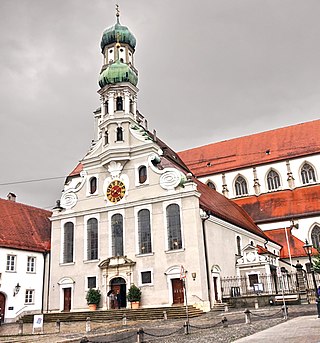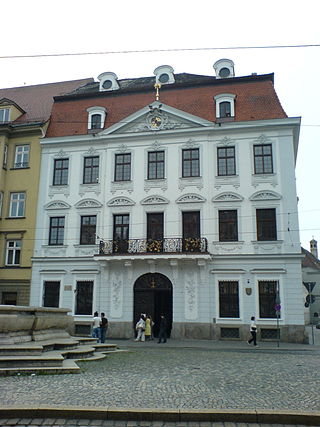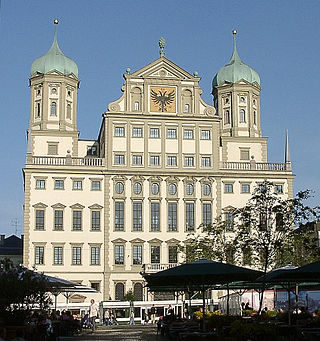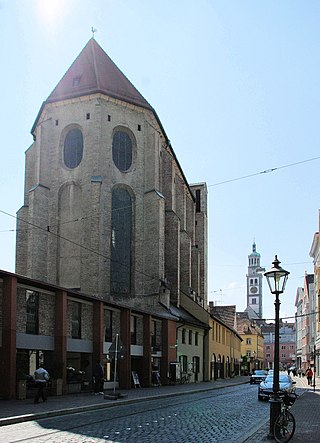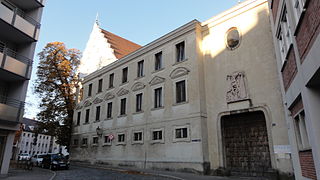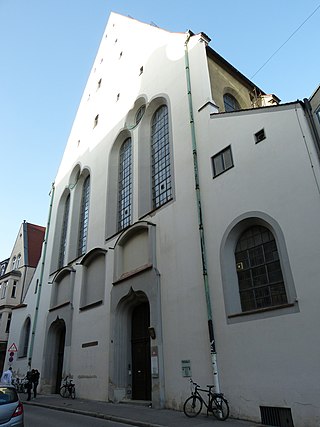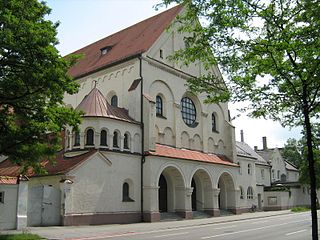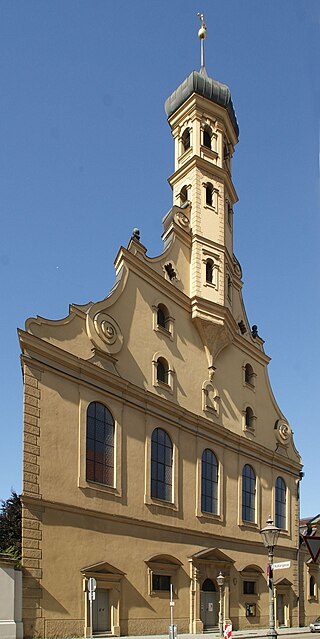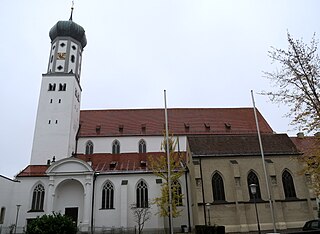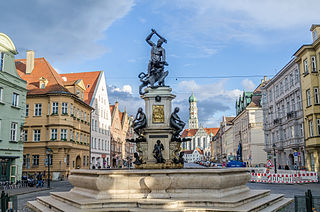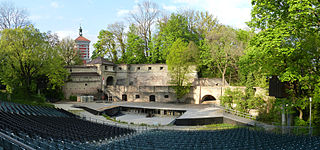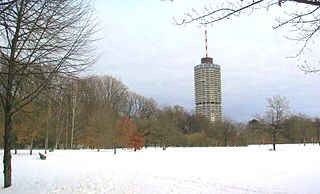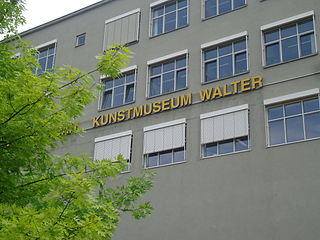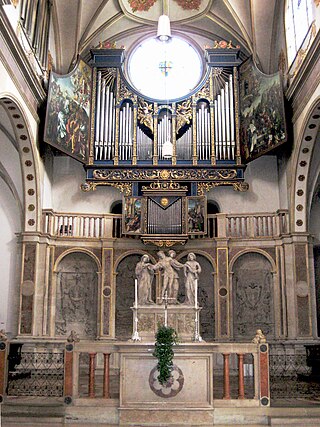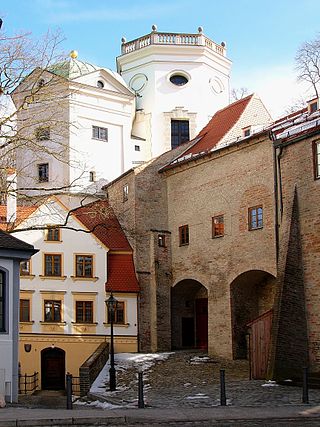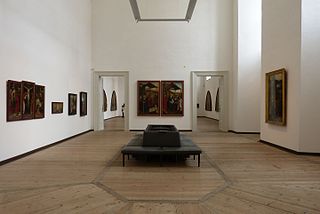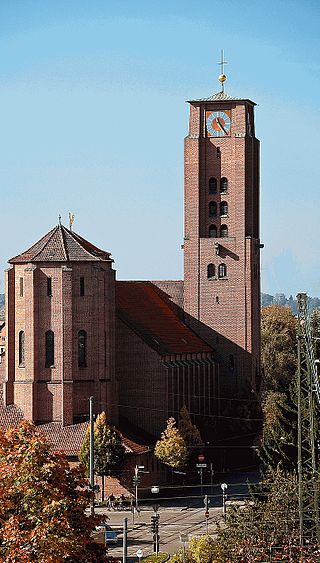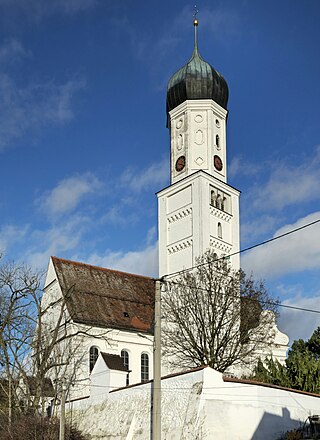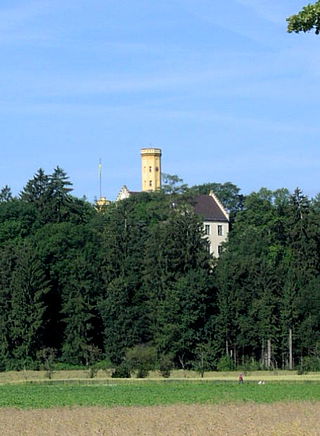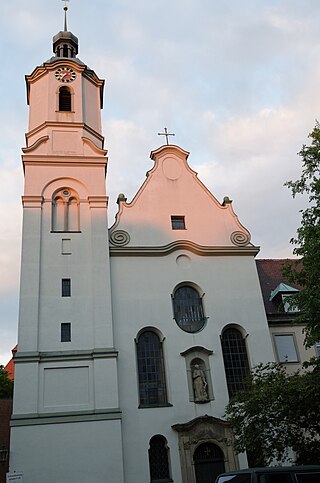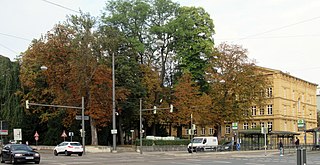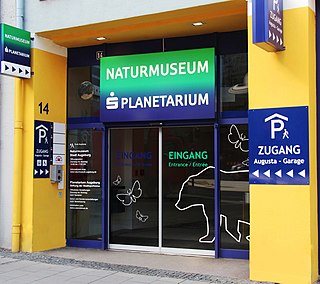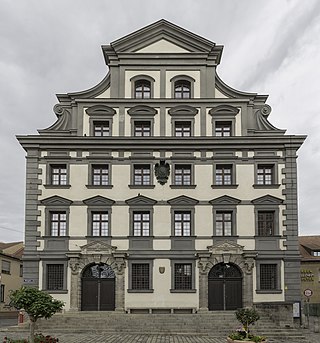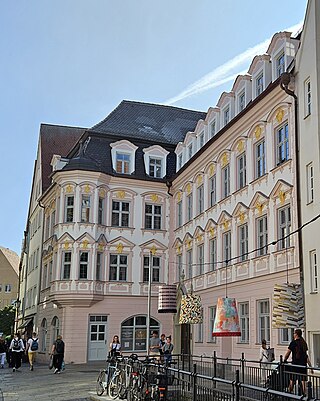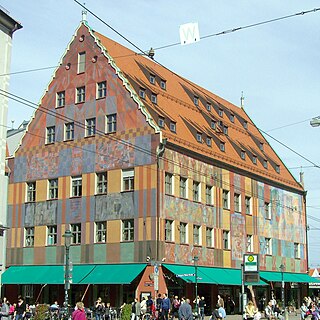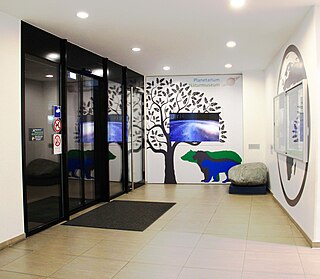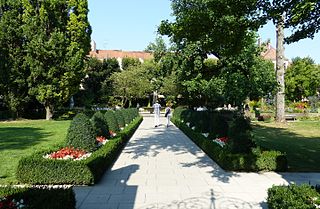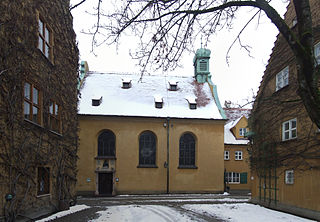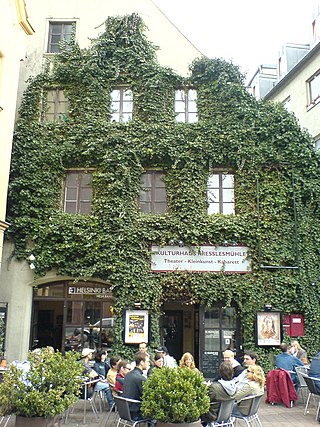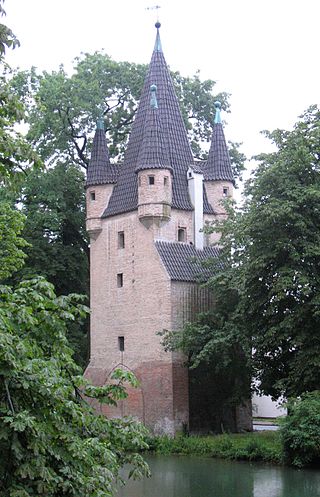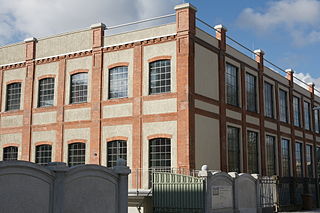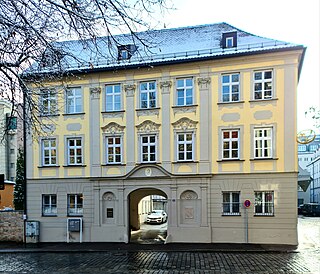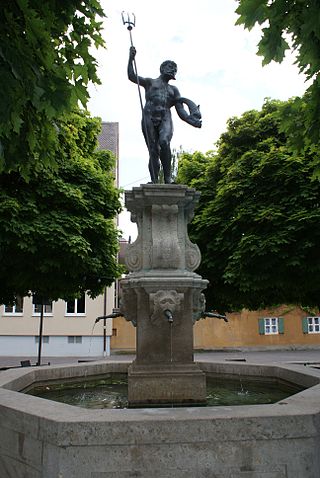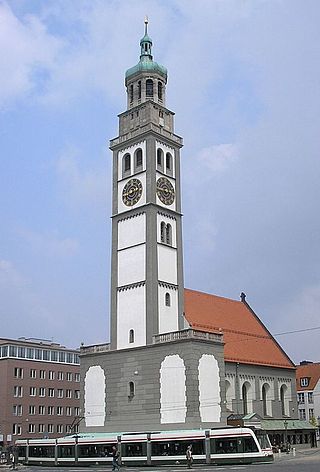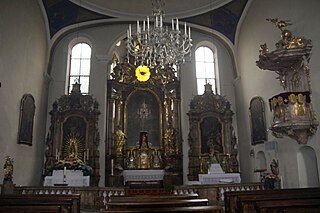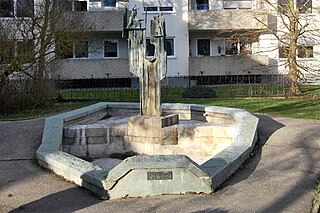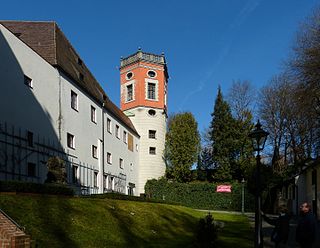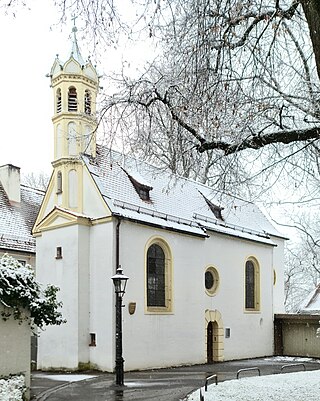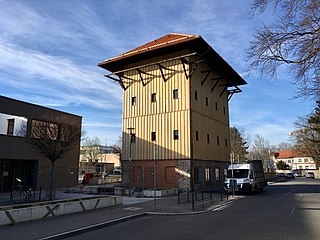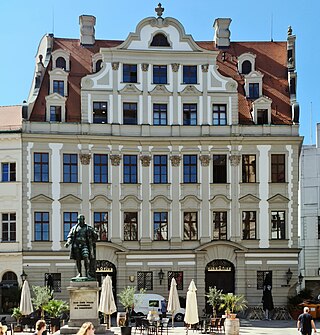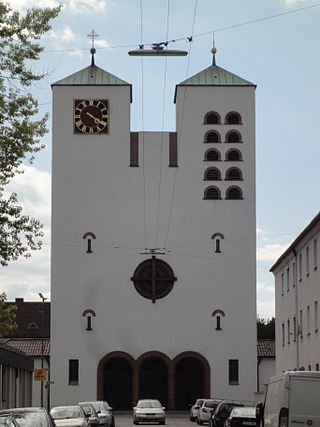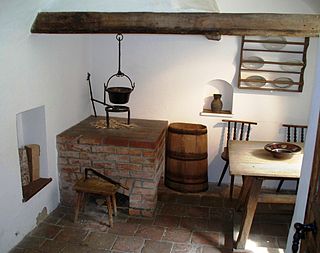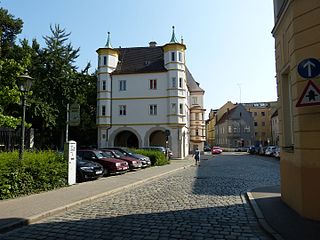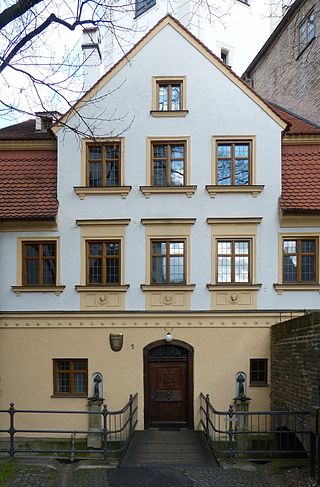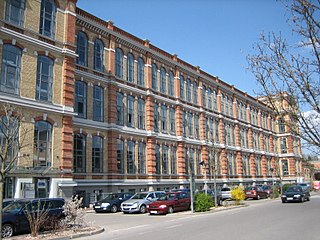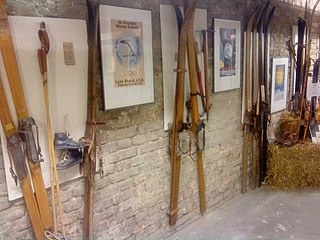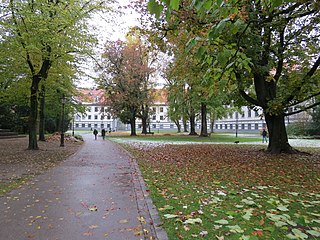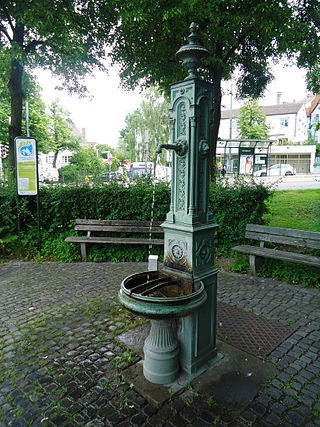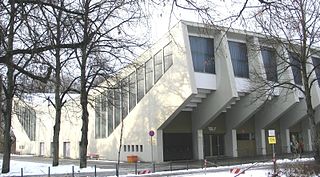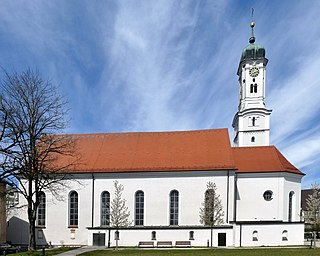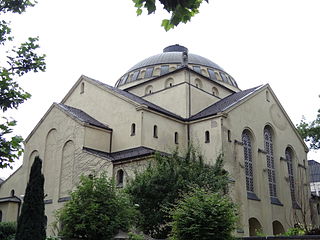82 Sights in Augsburg, Germany (with Map and Images)
Legend
Premium Sights
Book tickets, guided tours and activities in Augsburg.
Guided Free Walking Tours
Book free guided walking tours in Augsburg.
Welcome to your journey through the most beautiful sights in Augsburg, Germany! Whether you want to discover the city's historical treasures or experience its modern highlights, you'll find everything your heart desires here. Be inspired by our selection and plan your unforgettable adventure in Augsburg. Dive into the diversity of this fascinating city and discover everything it has to offer.
Sightseeing Tours in AugsburgActivities in AugsburgSt. Moritz in Augsburg is a Roman Catholic parish church and former collegiate church of the collegiate monastery of St. Moritz, which was dissolved as a result of secularization. Originally built as a burial place in memory of Bishop Bruno, the brother of Emperor Henry II the Saint, and expanded and redesigned several times over the centuries, it was rebuilt in a simplified form after its destruction in the Second World War from 1946 to 1950. It is protected as an architectural monument.
2. St. Ulrich
The Protestant Church of St. Ulrich is a parish church in Augsburg, Germany, located right next to the Catholic Basilica of St. Ulrich and Afra. This ensemble of the two churches, which are very unequal in size and at right angles to each other and form a structural unit, is unique in its kind. The parish of the Protestant St. Ulrich Church also includes the Holy Spirit Chapel in the Holy Spirit Hospital.
Wikipedia: Evangelische Ulrichskirche (Augsburg) (DE), Website
3. Fuggerei
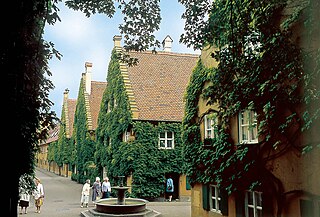
The Fuggerei is the world's oldest public housing complex still in use. It is a walled enclave within the city of Augsburg, Bavaria. It takes its name from the Fugger family and was founded in 1516 by Jakob Fugger the Younger as a place where the needy citizens of Augsburg could be housed. By 1523, 52 houses had been built, and in the coming years the area expanded with various streets, small squares and a church. The gates were locked at night, so the Fuggerei was, in its own right, very similar to a small independent medieval town. It is still inhabited today, affording it the status of being the oldest public housing project in the world.
4. Schaezlerpalais
The Schaezlerpalais is a baroque palace in Augsburg. The palace extends far back from the street, encompassing dozens of rooms, courtyards and gardens. The gilded mirrored ballroom was built between 1765-1770 and has survived intact. it is widely regarded as the most artistically significant Rococo ballroom in Germany. Carl Albert von Lespilliez was the architect of the Schaezlerpalais.
5. Augsburg Cathedral
The Cathedral of Augsburg is a Catholic cathedral in Augsburg, Bavaria, Germany, founded in the 11th century in Romanesque style, but with 14th-century Gothic additions. Together with the Basilica of St. Ulrich and Afra, it is one of the city's main attractions. It measures 113 x 40 m, and its towers are 62 m high. It is dedicated to the Visitation of Virgin Mary.
6. Rathaus
Augsburg Town Hall is the administrative centre of Augsburg, Bavaria, Germany, and one of the most significant secular buildings of the Renaissance style north of the Alps. It was designed and built by Elias Holl, Stadtbaumeister, in 1615–1624. Due to its historic and cultural importance, it is protected by the Hague Convention for the Protection of Cultural Property in the Event of Armed Conflict.
7. Goldener Saal
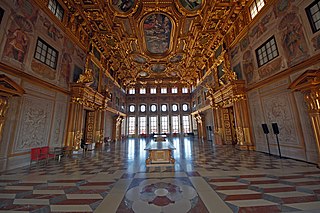
The Goldener Saal is a ceremonial room in the 3rd floor of Augsburg Town Hall, which is famous for its ceiling paintings, murals, and golden wall decoration. It was finished in 1643 and is one of the most important cultural monuments of the late Renaissance.
8. Barfüßerkirche
The Protestant Barfüßerkirche in the old town of Augsburg was built in the 13th century by the Franciscans (Barfüßern). After its extensive destruction in the Second World War, it was rebuilt in parts in a simplified way. The towerless church building, which still consists mainly of the former choir, rises out of the tangle of narrow streets and simple gabled houses and appears straight and accurate in its strict form.
9. Gaswerk Augsburg
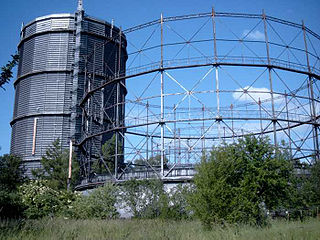
The Augsburg gasworks was put into operation at the end of 1915 in the Augsburg district of Oberhausen. Since 2001, the entire gasworks with the gas boiler – a disc gas tank formerly operated at low pressure – has been shut down.
10. Dominican Monastery of the Holy Cross
The Monastery of the Holy Cross is a former Augustinian monastery in Augsburg in Bavaria in the Diocese of Augsburg. It has been a Dominican monastery since 1936. The Catholic and Protestant Holy Cross churches are also located on the site.
11. Glaspalast
The Glass Palace is an industrial monument in Augsburg, which was put into operation in 1910 as the fourth and final expansion stage of the Mechanical Cotton Spinning and Weaving Mill Augsburg (SWA). It is located on Otto-Lindenmeyer-Straße, named after SWA's first major company manager. Production ended in 1988 with the bankruptcy of the company. The building was temporarily owned by the city of Augsburg and was sold to Ignaz Walter in 1999. As a refinancing of the renovation, the demolition of the mill's weaving shed halls was permitted. This new development area is now called Aumühle, which means that the former factory name lives on.
12. St. Thomas
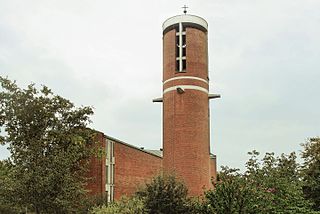
St. Thomas is a Protestant church in the Bavarian city of Augsburg. It is located in the west of the city in the Kriegshaber district and was built in 1961 in the style of modernity. It is striking to be visible from afar and a unique round bell tower in Augsburg. The church and the connected, former community and rectory have been listed since 2003.
13. Dominikanerkirche
The former Dominican Church of St. Magdalena in the Dominikanergasse in Augsburg, also known as the Predigerkirche, is the last remnant of the secularized Dominican monastery destroyed in the Second World War. As an architectural monument, it is entered in the Bavarian List of Monuments.
14. St. Sebastian
Until 2008, the monastery of St. Sebastian was a Capuchin monastery in Augsburg-Oberhausen, on the right side of the Wertach. It is surrounded on three sides by the factory premises of the mechanical engineering company MAN, and on the fourth side it borders Sebastianstraße.
15. Evangelische Heilig-Kreuz-Kirche
The Evangelical Lutheran Holy Cross Church in Augsburg was built in the 16th century from the extension of a former chapel. After the demolition of this church in 1630, the church was rebuilt from 1652 to 1653 in the style of a Protestant preaching church of the early Baroque period and in the following eight decades it was furnished with numerous Baroque paintings by important painters. It is the first Protestant church building in the city. As an architectural monument, it is entered in the Bavarian List of Monuments.
Wikipedia: Evangelische Heilig-Kreuz-Kirche (Augsburg) (DE), Website
16. St. Georg
The Roman Catholic parish church of St. George was built from 1490 to 1505 as a three-aisled basilica and is considered one of the last late Gothic basilicas in Swabia. Until 1802, the church served as the collegiate church of the Augustinian monastery of St. George, which was dissolved as a result of secularization. Today, St. Georg forms a parish community with St. Maximilian and St. Simpert. As an architectural monument, the church is registered in the Bavarian List of Monuments under the number D-7-61-000-312.
17. Schuttberg
The Augsburger Müllberg, also known as the Augsburger Schuttberg, is an artificial elevation in the north of the Augsburg city area. The mountain of rubble from the Augsburg-Nord landfill rises about 55 metres above sea level to a height of 512 metres above its surroundings, which are about 457 metres above sea level.
18. Herkulesbrunnen
The Hercules Fountain in Maximilianstraße is one of the three magnificent fountains in Augsburg, along with the Augustus Fountain and the Merkur Fountain. It was created in 1596–1600 by Adriaen de Vries in the Renaissance style. Its main character represents the Greek demigod Hercules.
19. Freilichtbühne Augsburg
The open-air stage at the Red Gate is one of the most renowned open-air theatres in Germany. With the Red Gate, the ramparts and the Holy Spirit Hospital in the background, it has a picturesque medieval backdrop.
20. Neue Galerie im Höhmannhaus
Since its opening in 1996, the Neue Galerie im Höhmannhaus has been the international forum for contemporary art of the Städtische Kunstsammlungen in Augsburg. It is located in the listed Höhmannhaus at Maximilianstraße 48.
21. St. Leonhard Kapelle
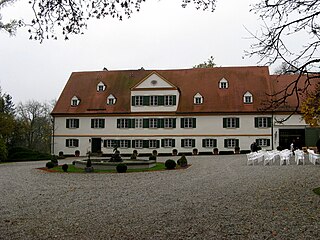
Bannacker is the southwesternmost district of the city of Augsburg. It emerged from the hamlet of Bannacker, which belonged to the municipality of Bergheim, when the municipality of Bergheim came to the city of Augsburg in 1972 in the course of its incorporation. The hamlet of Bannacker consisted of the Bannacker estate, owned by the Bertele family, and the estate of the Schäffler family, the so-called Jägersölde. Today, the district of Bannacker still consists of the so-called Bannacker manor house with the villa, the former Bertele estate and the Stochmayrhaus with the chapel and the Schaeffler estate.
22. Wittelsbacher Park
The Wittelsbacher Park is one of the largest green spaces in Augsburg. It is 18 hectares in size and has been a landscape conservation area since 10 March 1980. The total area of the protected area is 20.8 hectares.
23. Kunstmuseum Walter
The Kunstmuseum Walter is a privately run museum in Augsburg, Germany. It is located in the Glass Palace and shows modern and contemporary art. The owner of the collection and at the same time the namesake of the museum, which opened in 2002, is the building contractor Ignaz Walter, who died in 2023.
24. Sankt Anna
The Church of St. Anne is a medieval Evangelical Lutheran parish church in Augsburg, Germany. Originally built in 1321, it has undergone several significant renovations since, and is notable for its elaborate interior decoration, and its role in Protestant-Catholic relations in Germany.
25. Kurhaus Göggingen
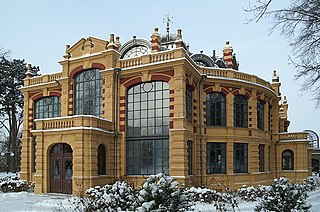
The Kurhaustheater Göggingen, popularly known as the Kurhaus, was designed by the architect Jean Keller on behalf of Hofrat Friedrich Hessing and built in Augsburg-Göggingen between 1885 and 1886. It is the only surviving multifunctional theatre in glass and cast iron construction from the Wilhelminian period.
26. Hochablass
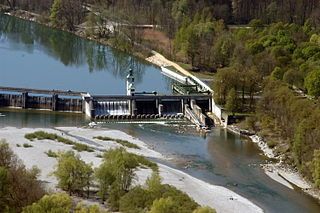
The Hochablass is a weir in the Lech, which lies in the eastern city of Augsburg. The Hauptstadtbach branches off from the western part of the weir, which is diverted from here to Augsburg's old town and flows through the Lechviertel in many canals together with the water of the Lochbach. It is an important part of Augsburg's historic water management and was added to the UNESCO World Heritage List on 6 July 2019 as part of Augsburg's water management system.
27. Großer Wasserturm
The water towers in Augsburg are monuments to Augsburg's historic water management. Of the preserved water towers in Augsburg, four have been part of the UNESCO World Heritage Site "Augsburg Water Management System" since 2019. One of them is considered the oldest water tower in Germany.
28. Sensemble Theater
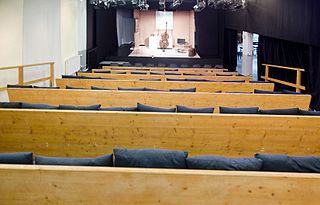
The Sensemble Theater is a theater in Augsburg, Germany. Its original spelling is S'ensemble Theater. Since the 2011/2012 season, the theatre has been using the spelling without the apostrophe. The clubs have also partially adopted this changed spelling.
29. Staatsgalerie Altdeutsche Meister
The Staatsgalerie Altdeutsche Meister, often referred to as the Staatsgalerie in der Katharinenkirche, is an art museum in Augsburg's Old Town. It was founded after 1806 and moved in 1835 to the Katharinenkirche of the former St. Catherine's Monastery in Augsburg. The gallery is the oldest branch gallery of the Bavarian State Painting Collections. It houses the most valuable collection of old German painting in Bavaria after the Alte Pinakothek, primarily "paintings of the Augsburg and Swabian schools of the late Middle Ages and the early Renaissance, the great period of Augsburg painting."
30. St. Thaddäus
The Catholic parish church of St. Thaddäus is located on the corner of Reinöhlstrasse and Ulmer Strasse in the Augsburg district of Kriegshaber (Neukriegshaber) at Augsburg-Oberhausen railway station opposite Keller & Knappich.
31. Kongress am Park

The Kongress am Park is an event venue in Augsburg, Germany. It is located in the northeastern area of the Wittelsbacher Park in the Antonsviertel and was opened in 1972. The multifunctional venue is used as a congress centre, for sales exhibitions as well as for concerts and other cultural events. Since 2009, the hall has been managed by Kongresshalle Augsburg Betriebs GmbH and marketed by Regio Augsburg Tourismus GmbH. The multi-part building complex is registered as an architectural monument in the Bavarian List of Monuments and is one of the "important buildings of post-war modernism" in Augsburg.
32. St. Peter und Paul
The Roman Catholic parish church of St. Peter and Paul in the Augsburg district of Oberhausen is one of the oldest churches in Augsburg. After its destruction in the Second World War, it was rebuilt in a simplified form. The church is registered as an architectural monument in the Bavarian list of monuments.
33. Kleiner Goldener Saal
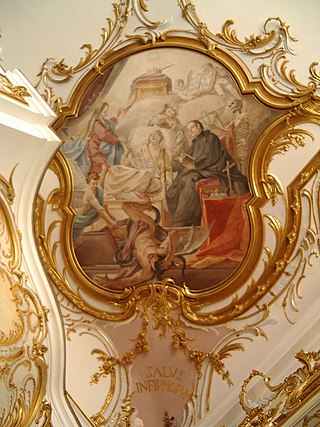
The Small Golden Hall is a late Baroque banqueting hall of the former Augsburg Jesuit College of St. Salvator, located at Jesuitengasse 12 north of the cathedral. The Small Golden Hall should not be confused with the Golden Hall in the town hall of the Fugger city.
34. Schloss Wellenburg
Wellenburg Castle, also known as Fugger Castle, located on a wooded spur high above the valley of the Wertach, is a castle in the Augsburg-Bergheim district that has been redesigned in the neo-Gothic style. It has been inhabited by the Fugger-Babenhausen family since 1595 and is not open to the public.
35. St. Peter und Paul
The sacred building of St. Peter and Paul, which belongs to the late High Baroque style and in which the Gothic church tower of the predecessor building was adopted, is a Roman Catholic parish church in the centre of the Augsburg district of Inningen. It stands on a hill north of the old town centre. The church belongs to the parish community of Göggingen-Inningen. The church is protected as an architectural monument and registered with the number D-7-61-000-187.
36. St. Stephan
The monastery church of St. Stephen in Augsburg is a former convent church of the convent of St. Stephen. After its destruction in the Second World War, it was rebuilt in a simplified form until 1966. As an architectural monument in the district of Bleich and Pfärrle, the church, which belongs to the monastery of St. Stephen, is entered in the Bavarian list of monuments.
37. Stadtpflegeranger
The Stadtpflegeranger is a small green space in the city centre of Augsburg. It is located in the station district on the street Am Alten Einlaß and, together with several surrounding historic buildings, forms an urban ensemble that is under ensemble protection. Only a smaller part of the green area, which was laid out at the beginning of the 19th century, now remains.
38. Jakobsbrunnen
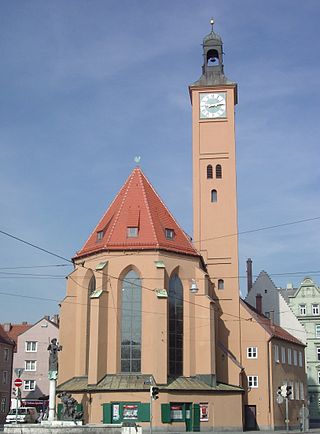
The Church of St. Jakob in Augsburg, also known as Jakobskirche, is a Protestant church in Augsburg, Germany. It is an architectural monument in the Augsburg-Jakobervorstadt-Nord district and the historical centre of Augsburg's Jakobervorstadt. The church is an important stop on the Augsburg Way of St. James, the St. James pilgrimage route in Bavarian Swabia. The St. James Pilgrimage Community Augsburg maintains the signage of the Way of St. James from Oettingen via Augsburg to Lindau.
39. Zeughaus
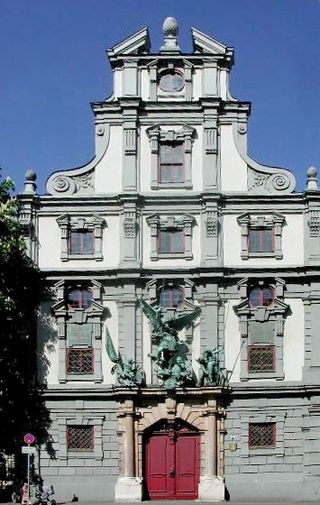
The armoury in the old town of Augsburg was built between 1602 and 1607 by Elias Holl. The designs for the façade – which, depending on the author, can be assigned either to the Renaissance or already to the Baroque, but most accurately to the transitional style of Mannerism – were created by Joseph Heintz.
40. Naturmuseum
The Augsburg Natural History Museum is operated by the city of Augsburg and is located in the "Augusta Arcaden" in the northern old town. The focus of the exhibitions from the fields of geology, mineralogy, botany, zoology and paleontology is the molasse, a soil layer consisting of weathered debris that makes up the subsoil of a large part of the Alpine foothills and southern Germany. The Augsburg Museum of Natural History is the only one in Germany that specialises in this area.
41. Stadtmetzg
The Stadtmetzg of Augsburg is a historic building in the style of the late Renaissance. It was built between 1606 and 1609 by Elias Holl and is located at the lower end of the Perlachberg. The listed building now belongs to the Jakobervorstadt-Nord district, even though historically it is not located in Jakobervorstadt, but in the Lechviertel. The town butcher's shop, which served as a butcher's shop for centuries, is now used as an administrative building.
42. Gignoux-Haus
The Gignoux House in the Lechviertel of Augsburg is a historic building in the Rococo style and was built in 1764/65 by Leonhard Christian Mayer. Until July 2010, it housed the Komödie, a venue of the Augsburg Theatre.
43. Synagoge Kriegshaber
The Kriegshaber Synagogue is the oldest surviving synagogue in Bavarian Swabia. For almost three hundred years, it formed the center of the Jewish community in Kriegshaber, a formerly independent place at the gates of the free imperial city, today a district of Augsburg. The profaned house of worship is located at Ulmer Straße 228 and has been a branch of the Jewish Museum Augsburg-Swabia since its renovation in 2011–2014.
44. Weberhaus
The Weavers' House is the former guild house of the weavers in Augsburg. The historicizing building, erected in 1913, replaced a late Gothic predecessor building on about the same site. It is located in the city center at Moritzplatz. The monument is listed under the file number D-7-61-000-727 in the Bavarian List of Monuments.
45. Wertachbrucker Tor
The Wertachbruck Gate is located on the edge of Augsburg's old town and used to be part of the medieval city wall as a passageway. Today, it serves primarily as a representative building for the carpenters' guild and as an event venue.
46. Sparkassen-Planetarium Augsburg
The Sparkassen Planetarium is a planetarium in Augsburg's city centre, which was established in 1985 on the occasion of the 2000th anniversary of the city of Augsburg as a foundation of the Stadtsparkasse and began operations in 1989.
47. Perlachturm
The 70-metre-tall Perlachturm is a belltower in front of the church of St. Peter am Perlach in the central district of Augsburg, Germany. It originated as a watchtower in the 10th century. The existing Renaissance structure was built in the 1610s by Elias Holl, who also designed the neighbouring Town Hall.
48. Hofgarten
The Hofgarten is a green space in the old town of Augsburg. It is part of the former prince-bishop's residence, which was rebuilt in the 18th century and was laid out between 1739 and 1744 by Johann Caspar Bagnato.
49. Jakobertor
The Jakobertor from the 14th century is one of five still existing Augsburg city gates and forms the eastern end of the Jakobervorstadt. It was originally part of the city wall. Only a small section of this has been reconstructed to the north, so that the gate is largely free.
50. Markuskirche
St. Mark's Church, also known as St. Mark's Chapel, in the Fuggerei in Augsburg was built from 1580 to 1582 and rebuilt until 1950 after its destruction in the Second World War. As an architectural monument, it is entered in the Bavarian List of Monuments.
51. Holy Cross Catholic Church
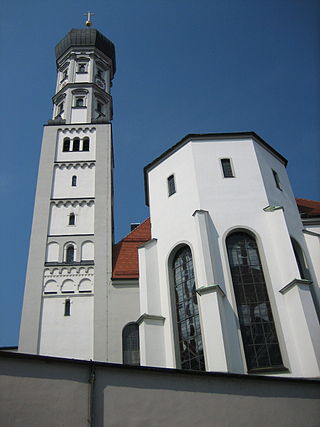
The Catholic Holy Cross Church is a Roman Catholic parish church in the southern German city of Augsburg, Bavaria. While its history dates back to 1143 when a hospice with a chapel was constructed on the site, the present church in the Gothic style was built by Provost Vitus Fackler in 1508. After bombing damage in the Second World War, rebuilding work was completed in 1949.
52. Kulturhaus Kresslesmühle
The Kulturhaus Kresslesmühle is a municipal cabaret theatre with an educational centre and gastronomy in Augsburg's Lechviertel. The building, which is registered as an architectural monument in the Bavarian List of Monuments, is a former water mill.
53. Haag-Villa
The Villa Haag, also known as the Haag Villa, is the former residential and office building of the Augsburg manufacturer Johannes Haag (1819–1887). The representative director's villa, built in the neo-Renaissance style, is an architectural monument in the Am Schäfflerbach district and has the address Johannes-Haag-Straße 14 in Augsburg's textile district.
54. Fünfgratturm
The Fünfgratturm is a fortified tower in Augsburg, Germany. It was built in 1454 as part of Augsburg's eastern city fortifications around the Jakobervorstadt. It has been isolated since the demolition of this part of the city wall in 1867/68. It was built especially for the so-called Scharwächter – patrols that ensured that the people of Augsburg could sleep peacefully. In 1948 and 1973/74 the tower was renovated. It is a listed building.
55. TIM Staatliches Textil- und Industriemuseum
The Augsburg textile and industry museum, known by its acronym tim, is a museum in Augsburg a city in the south-west of Bavaria, Germany. It is situated in the Augsburger Kammgarnspinnerei, a former worsted spinning mill. The museum is an Anchor point on the European Route of Industrial Heritage.
Wikipedia: Augsburg textile and industry museum (EN), Website
56. Peutingerhaus
From 1515 onwards, the Peutingerhaus in Augsburg served as the residence of the humanist and town clerk Konrad Peutinger (1465–1547). The building, which dates back to the Middle Ages in its core, was rebuilt in the 18th century. In the walls of the gateway and the inner courtyard there are some Roman gravestones and a stone from the Middle Ages with a Hebrew inscription, which the passionate antiquities collector Peutinger had walled in there.
57. Neptunbrunnen
The Neptune Fountain in Augsburg is dedicated to the Roman god Neptune and has an eventful history. It is Augsburg's oldest fountain figure, as it is assumed that the figure was created around 1518. Other sources assume that it was manufactured in 1536/1537. It was made of bronze and probably designed by the Augsburg sculptor Hans Daucher, other sources point to the sculptor Sebastian Löscher.
58. St. Peter am Perlach
St. Peter am Perlach or Perlach-Church is a romanesque Catholic church in the center of Augsburg (Bavaria). The tower of the church, the Perlachturm, is together with the Augsburg Town Hall the landmark of Augsburg.
59. St. Margareth
The Church of St. Margareth in Augsburg is a former convent church of the Dominican nuns and is now used by the Priestly Brotherhood of St. Peter. The church is an architectural monument that is entered in the Bavarian List of Monuments.
60. Handwerkerbrunnen
Der Handwerkerbrunnen auf dem Georg-Käß-Platz in Augsburg-Haunstetten wurde von Christian Angerbauer 1972 geschaffen, im Jahr der Eingemeindung Haunstettens nach Augsburg. Er bildet den Mittelpunkt einer kleinen Grünanlage, die 1971 durch den Abriss eines ehemaligen Schmiedeanwesens entstanden war.
61. Kastenturm
The Kastenturm, also known as the Spitalturm, is a water tower in Augsburg and a monument to Augsburg's historic water management. It is located at the Heilig-Geist-Spital, which is adjacent to the waterworks at the Red Gate.
62. St. Gallus
The Church of St. Gallus, also Galluskirchlein, is a Romanesque building in Augsburg and probably the oldest surviving church in Augsburg. The church, which is also called a chapel because of its small size, is an architectural monument that is entered in the Bavarian List of Monuments.
63. Färberturm
The dyer's tower, which was used in the 18th and 19th centuries by the guild of bleachers and dyers, was used to hang out and dry dyed lengths of fabric. One such testimony to the flourishing textile industry has been preserved in the textile city of Augsburg: a dyeing tower on the site of the former Augsburg worsted yarn spinning mill (AKS) has been placed under monument protection.
64. Augsburger Kahnfahrt
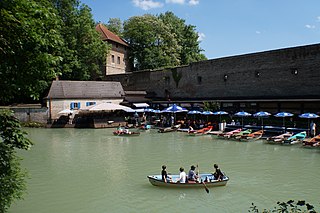
The Augsburger Kahnfahrt is a leisure facility with a restaurant and beer garden in Augsburg. The privately owned boat rental company has a tradition dating back to the 19th century and uses the water areas of the city moat in the historic Augsburg district of Jakobervorstadt.
65. Köpfhaus
The Köpfhaus is a three-storey corner house in the city centre of Augsburg, which is a listed building. It is located at Fuggerplatz 9 and consists of various houses that have been united into one building over the centuries. The oldest parts of the Köpfhaus date back to the 14th century.
66. St. Martin
St. Martin is a Roman Catholic parish church in the north of the Augsburg district of Oberhausen. It belongs to the Augsburg II deanery of the Diocese of Augsburg. The three-aisled basilica with a recessed choir is protected as an architectural monument.
67. Fuggereimuseum
The Fuggerei Museum deals with the history of the Augsburg Fuggerei. It was founded in 1957 and is located at Mittlere Gasse 13 and 14. In addition to a permanent exhibition, it houses a historic museum apartment that shows life and living in the Fuggerei at the time of the early 19th century, as well as a modern show apartment. Since 2008, a World War II bunker has also been attached to the museum.
68. MAN-Museum
The MAN Museum is a technology and transport museum in Augsburg and is supported and maintained by MAN SE, MAN Diesel & Turbo SE and manroland AG. His 1,800 m² exhibition is primarily dedicated to the history and technical developments of the group of companies, which originated here in 1840.
69. Maximilianmuseum
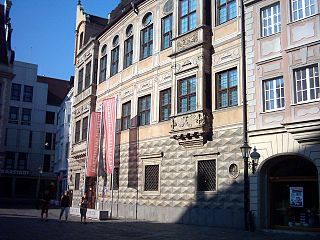
The Maximilian Museum is a large, public museum housed in a palatial building erected in 1546 in Augsburg, Germany. It houses a notable collection of decorative arts. Augsburg was the leading German center of sculpture, painting, and, especially, of fine work in gold in silver from the late Middle Ages until the modern period.
70. Burggrafenturm
The Burgrave's Tower is a building in the former episcopal city of Augsburg, Germany. The episcopal city had been built on the ruins of the Roman settlement and consisted of a castle-like complex with a cathedral, a serfdom and an episcopal palace. In the burgrave's tower, which was rebuilt in 1507 under Bishop Henry IV of Lichtenau, the burgrave lived as the highest official of the castle town. However, the formerly important office was no longer mentioned in the imperial city court order of the 15th century.
71. Oberes Brunnenmeisterhaus
The upper fountain master's house in Augsburg, also known as the "Haus bei den Fischen", served as the official residence of the Augsburg fountain masters. Today it is part of the historic waterworks at the Red Gate, which is a listed building.
72. Dombrunnen
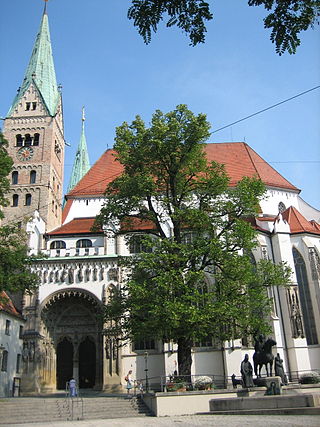
The cathedral fountain in Augsburg is located in the south of the east choir of Augsburg Cathedral on the cathedral square and consists of a group of figures of the three patron saints of the diocese: Bishop Ulrich, St. Afra and Bishop Simpert.
73. Heilig-Geist-Kapelle
The Chapel of the Holy Spirit in Augsburg is located in the Holy Spirit Hospital in Spitalgasse, right next to the upper fountain master's house at the Red Gate. It is also known as the hospital chapel. It is an architectural monument in the Augsburg-Lechviertel district, eastern Ulrichsviertel.
74. Fabrikschloss
The Mechanische Baumwollspinnerei und Weberei is a cotton mill in Augsburg, Bavaria, Germany. It was founded in 1837 and was considered one of the oldest textile manufacturing companies in Germany. It was closed in 1989.
Wikipedia: Mechanische Baumwollspinnerei und Weberei Augsburg (EN)
75. Skimuseum
The Augsburg Ski Museum is located in Augsburg's textile district and deals with the history and development of modern skiing. It exhibits various historical and contemporary exhibits on an area of 300 m².
76. Georgsbrunnen
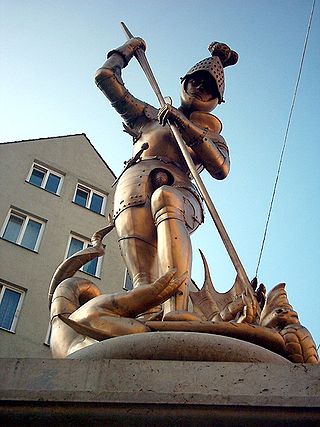
The Georgsbrunnen fountain in Augsburg is dedicated to Saint George. Like so many fountains in the city's history, it has often changed its location. Since 1993, it has been located opposite the Stadtmetzg at the lower end of the Perlachberg.
77. Fronhof
The Fronhof is a green space in the city centre of Augsburg. It is surrounded to the north and west by the former prince-bishop's residence, today the seat of the government of Swabia. To the east is Augsburg Cathedral, including the cathedral forecourt and Roman wall. To the south, a row of houses – including the Burgrave's Tower – and Peutingerstraße border the Fronhof. The Fronhof as a green space is not to be confused with the Fronhof street, which is located a little further west by the Hofgarten.
78. Trinkbrunnen Senkelbach
The fountain on Bourges-Platz in Augsburg was built around 1900 and is registered as an architectural monument in the Bavarian List of Monuments. It is one of the last public drinking water fountains in the city area from this time. Once upon a time, these cast-iron fountains were represented in large numbers in Augsburg.
79. Erhard-Wunderlich-Sporthalle
The Erhard-Wunderlich-Sporthalle is a multi-purpose hall in the Antonsviertel district of Augsburg, Bavaria. The listed building is located on the southern edge of the Wittelsbach Park and was built between 1963 and 1965 at a cost of around 3.95 million DM. It is the first large hall built in Augsburg after the Second World War. Since 2012, the former Augsburg sports hall has borne the official name "Erhard Wunderlich Sports Hall" in honour of the Augsburg-born national handball player Erhard Wunderlich (1956–2012).
80. St. Georg und Michael
St. Georg und Michael is a Roman Catholic parish church in the centre of the Augsburg district of Göggingen. The church is protected as an architectural monument and registered with the number D-7-61-000-555. Neighboring is the Protestant Trinity Church.
81. Jewish Museum Augsburg Swabia
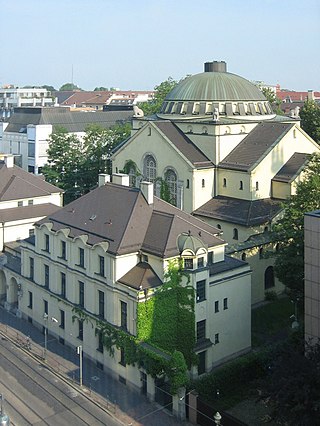
The Jewish Museum Augsburg Swabia was opened in 1985 under the name "Jewish Cultural Museum Augsburg-Swabia". At that time, it was the first independent Jewish museum in the Federal Republic of Germany. In November 2018, it was renamed "Jewish Museum Augsburg Swabia".
Wikipedia: Jüdisches Kulturmuseum Augsburg-Schwaben (DE), Website
82. Augsburg Synagogue
The Augsburg synagogue serves as a cultural center for the Jewish community in Augsburg. For example, the Jewish Community of Swabia-Augsburg celebrates Shabbat there every Friday evening and every Saturday morning. The synagogue was built between 1914 and 1917 according to the designs of the architects Fritz Landauer and Heinrich Lömpel in Halderstraße, not far from Königsplatz. The synagogue in Augsburg was also affected by the Kristallnacht pogrom and the Allied air raids that were carried out later. It was not until 1963 that a small part of the synagogue could be used by the community again. Between 1974 and 1985, the synagogue was finally completely restored. Since its reopening in 1985, it has also housed the Jewish Museum Augsburg Swabia. The synagogue can be visited as part of the museum visit.
Share
How likely are you to recommend us?
Disclaimer Please be aware of your surroundings and do not enter private property. We are not liable for any damages that occur during the tours.

